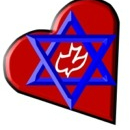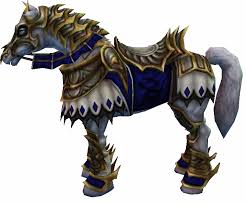Revelation 9:7-12
The End Times
In my last post, we concluded our exploration of the blowing of the Fifth Shofar. In this post, we continue exploring Revelation 9:7-12 by examining the Description of the Locusts in the Fifth Shofar.
“Now these locusts looked like horses outfitted for battle. On their heads were what looked like crowns of gold, and their faces were like human faces. 8 They had hair like women’s hair, and their teeth were like those of lions. 9 Their chests were like iron breastplates, and the sound their wings made was like the roar of many horses and chariots rushing into battle. 10 They had tails like those of scorpions, with stings; and in their tails was their power to hurt people for five months. 11 They had as king over them the angel of the Abyss, whose name in Hebrew is “Abaddon” and in our language, “Destroyer.” 12 The first woe has passed, but there are still two woes to come. ~ Revelation 9:7-12 (CJB)
If my memory serves me correctly, Hal Lindsey in “Late Great Planet Earth” interpreted Yochanan’s vision of the locusts as Apache Helicopters. That certainly made sense to me. We’ll see in a moment what others have said about them.
How would you describe these demon creatures if you were in Yochanan’s place? Yochanan sees the resemblance of several different kinds of animals: horses, men, lions and scorpions. The horse depicts power; men denote intelligence; the lion is a statement of deadliness and the scorpion symbolizes the pain inflicted.
While the language is obviously figurative the images he uses must not be spiritualized into generalities. The images convey pictures of terrifying reality. The similarities between this locust invasion and the literal locust invasion of Judah in the days of Joel 2:4-5 are instructive. For the prophet, locusts and armies have an analogous appearance, movement, and sound; both are used by him to capture the presence of the ultimate powerful army.
Eight features are identified: [1]
- Their shapes ~ like horses outfitted for battle. Both ancient and more modern writers find the head of a horse a suitable picture of the head of the locust. We can see a resemblance in the shell-like scales of locusts and the metal (or leather) protective plates commonly placed over the horses’ flanks when outfitted for battle.
- Their heads ~ on their heads were what looked like crowns of gold. Appendages of some kind, resembling crowns, glittered like gold around their heads. While pretended dignity or royalty may be involved, the specific use of crowns points to victory.
- Their faces ~ their faces were like human faces. These spirit-beings, described as locusts, seen with the faces of men is perhaps their most terrifying feature. This suggests a claim to intelligence but with malignancy and cruelty adding terror to the picture; their authority is a usurped and harmful domination of mankind. Features of man, beast and insect are linked in diabolical association.
- Their hair ~ like women’s hair. The long flowing hair of these creatures reminds Yochanan of a characteristic feature of womanhood (1 Corinthians 11:15). The two short antennae of the normal locust would hardly give rise to this feature but the abundance of womanly hair may indicate effeminacy.
- Their teeth ~ their teeth were like those of lions. This recalls Joel 1:6: For a mighty and numberless nation has invaded my land. His teeth are lion’s teeth; his fangs are those of a lioness. The carnivorous appearance invokes the idea of terrifying ferocity yet these demon-locusts inflict their hurt not with their teeth but with their tails.
- Their chests ~ their chests were like iron breastplates. These “plates of iron” protect the vital organs and suggest impregnability. No weapon can penetrate this armor to destroy these locusts.
- Their wings ~ the sound their wings made was like the roar of many horses and chariots rushing into battle. This recalls Joel 2:5 and describes the thunder of a charging army that strikes terror even before the battle is joined. Such an armored charge would be irresistible – nothing can stand in its path. Many of us can easily detect the noise of one helicopter flying overhead. If it were many, the noise would be deafening.
- Their tails ~ they had tails like those of scorpions. The most repulsive member of the spider family, the scorpion has scarcely a redeeming feature. When its claws fasten on to its victim the tail curves back with frightening speed, its needle-like point penetrates the skin and injects the poison. The picture is one of cruel and relentless irritability.
Viewed from head to tail the physical description is terrifying but recognizing that they are supernatural in origin and released under satanic direction to bring such terrible pain that victims would find death a relief, adds a further dimension to their terror. God is allowing the spirit-world of demons to be seen in its true character. Now men will reap what they have sown and bitter anguish will result. This trumpet shows evil powers in their true colors.

Locust Swarm in Madagascar courtesy of Google
They had as king over them the angel of the Abyss, whose name in Hebrew is “Abaddon” and in our language, “Destroyer.” It is noteworthy to point out that real locust don’t have kings over them (Proverbs 30:27). This king is further identified by two additional names. The name Abaddon in Hebrew means destroying angel and the name Apollyon [2] means destroyer. These names are used to further reveal the character of this king of locusts, and they identify him as the fallen angel who is Lucifer, the devil himself.
The first woe has passed, but there are still two woes to come. As bad as things are, there is still additional judgment to fall. If suddenly all law enforcement agents were removed from society and crime could go unchecked, the situation would still not be as terrible as the one playing out in this passage of Scripture.
Special Comparative Note on Chapter 9:7-12 [3]
Historicist Approach:
Historicists liken the locusts to the Islamic hordes (see Judges 6:5). Islamic tradition speaks of locusts having dropped into the hands of Mohammed, bearing on their wings this inscription: “We are the army of the Great God.” The crowns as seen as turbans; the hair like women’s hair is typical of bearded, long-haired Muslim men and Jews; the iron breastplates are literal. These warriors were also known for their proficiency of fighting over their horses’ tails like those of scorpions. (While I disagree with the Historicists interpretation of when these events occur, they may not be that far off in their description if we look at the modern ISIS terrorists.)
Preterist Approach:
Preterists view the locusts as demons set loose in the besieged City of Jerusalem in 70 CE. The king was Satan himself.
Futurist Approach:
Those Futurists who understand these as demonic creatures generally don’t attempt to explain the features of the locusts as symbolic of anything else but their actual appearance.
Idealist Approach:
Idealists view the locusts as demons and relate their description to the first two chapters of Joel.
In my next post, we will begin to explore the Sixth Shofar in Revelation 9:13-15.
[1] What the Bible teaches – Revelation by James Allen.
[2] Greek word used in most English translations. Sterns uses our English word in his translation.
[3] Material in this section is taken from “Revelation: Four Views, Revised & Updated” by Steve Gregg




Good analysis on the locusts
LikeLike
The description of the locusts being the Apache helicopter never really made much sense to me. For one, it is becoming an obsolete craft.
So, my question is, “Are the locust real or symbolic?” In this day of genetic manipulation, is it possible that a breed of locust can be created to have a scorpion tail? I don’t know. However, I’m not ready to discount genetic modifications.
LikeLike
Patrick, I read Late Great Planet Earth over 40 years ago and wasn’t sure if my memory served me correctly. At the time, I thought it was a feasible analogy. As to real or symbolic, I tend to accept Yochanan’s description as demonic creatures. I have tried to put myself into his shoes when he describes things that had/have no real equivalent in nature at the time. Don
LikeLike
That works for me as well… 🙂 One of these days we will be just like Peter saying, “This is that which was spoken…”
LikeLiked by 1 person
Petsonally, I’m ready for that day.
LikeLike